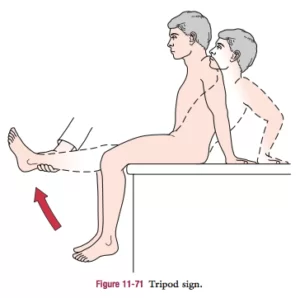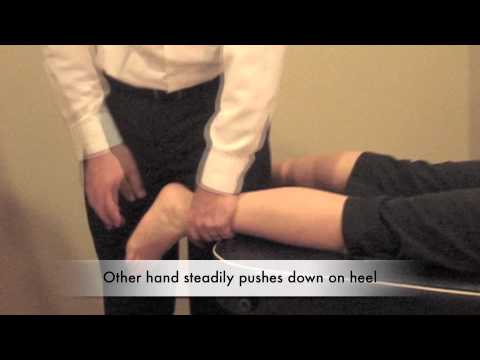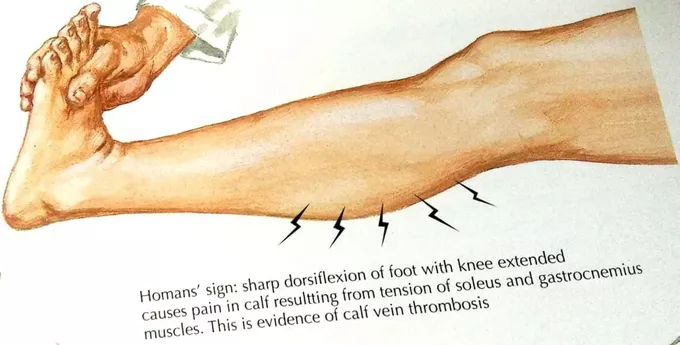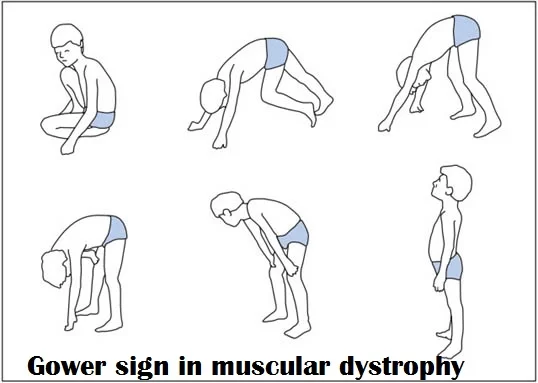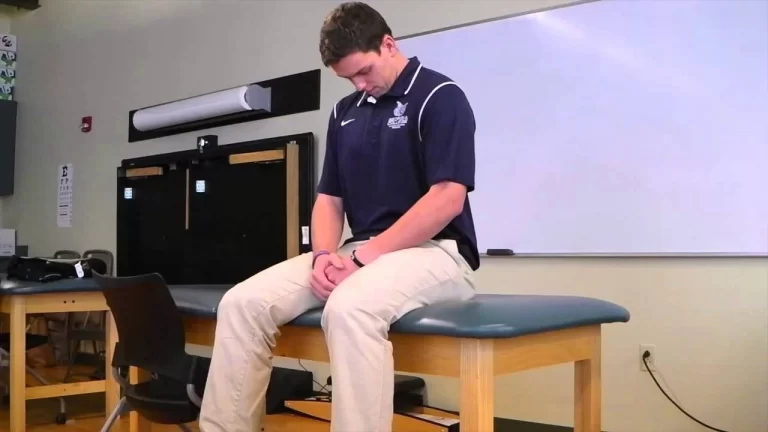Tripod Sign
What is a Tripod Sign?
The Tripod Sign, in the orthopedic context, is a test used to assess the length of the hamstring muscles. The hamstrings are a group of muscles located at the back of the thigh, and tight or shortened hamstrings can contribute to various musculoskeletal issues and postural imbalances.
Positioning:
A treatment table or examination bench are example of raised surfaces on which the patient is asked to sit. The legs should be relaxed with his knees flexed to 90° and the feet hanging off the side of the table.
Test Execution:
The examiner checks the patient’s ability to completely extend their knee in this posture without experiencing any hip flexion. Without using their hands, the patient will make an effort to straighten their knee.
Interpretation:
The test is considered negative if the patient can fully extend their knee (with their leg straightened) without experiencing any hip flexion or without extending the trunk. This shows that their hamstring muscles are long enough.
Positive Test:
If the patient is unable to fully extend their knee without flexing at the hip joint or extending the trunk, it suggests that the hamstring muscles are shortened or tight. In this case, the test is considered positive for limited hamstring flexibility.
Medical experts use a variety of clinical tests to evaluate joint flexibility and muscle length, including the Tripod Sign. For those who have lower back pain, hip pain, or other musculoskeletal problems linked to tight hamstrings, it might be important information regarding the condition of the hamstrings.
The results of any clinical test must always be interpreted in accordance with the patient’s whole clinical picture, other evaluation findings, and other findings from the test. It is advised to see an experienced healthcare practitioner, such as a physical therapist or orthopedic specialist, for a thorough assessment and proper therapy if you observe any problems with hamstring tightness or any musculoskeletal symptoms.

